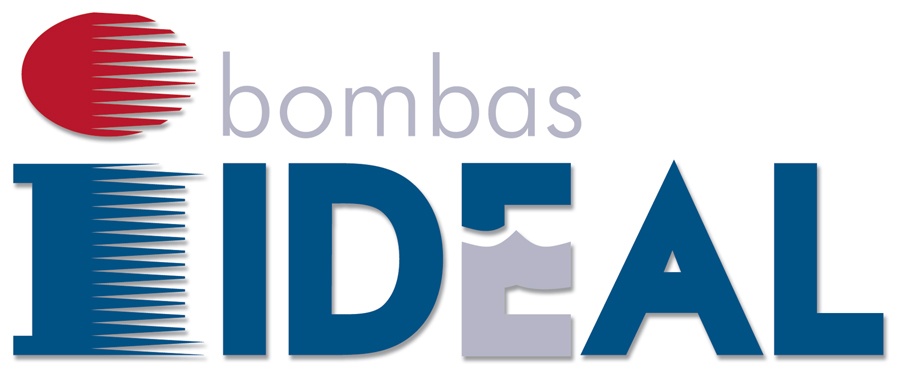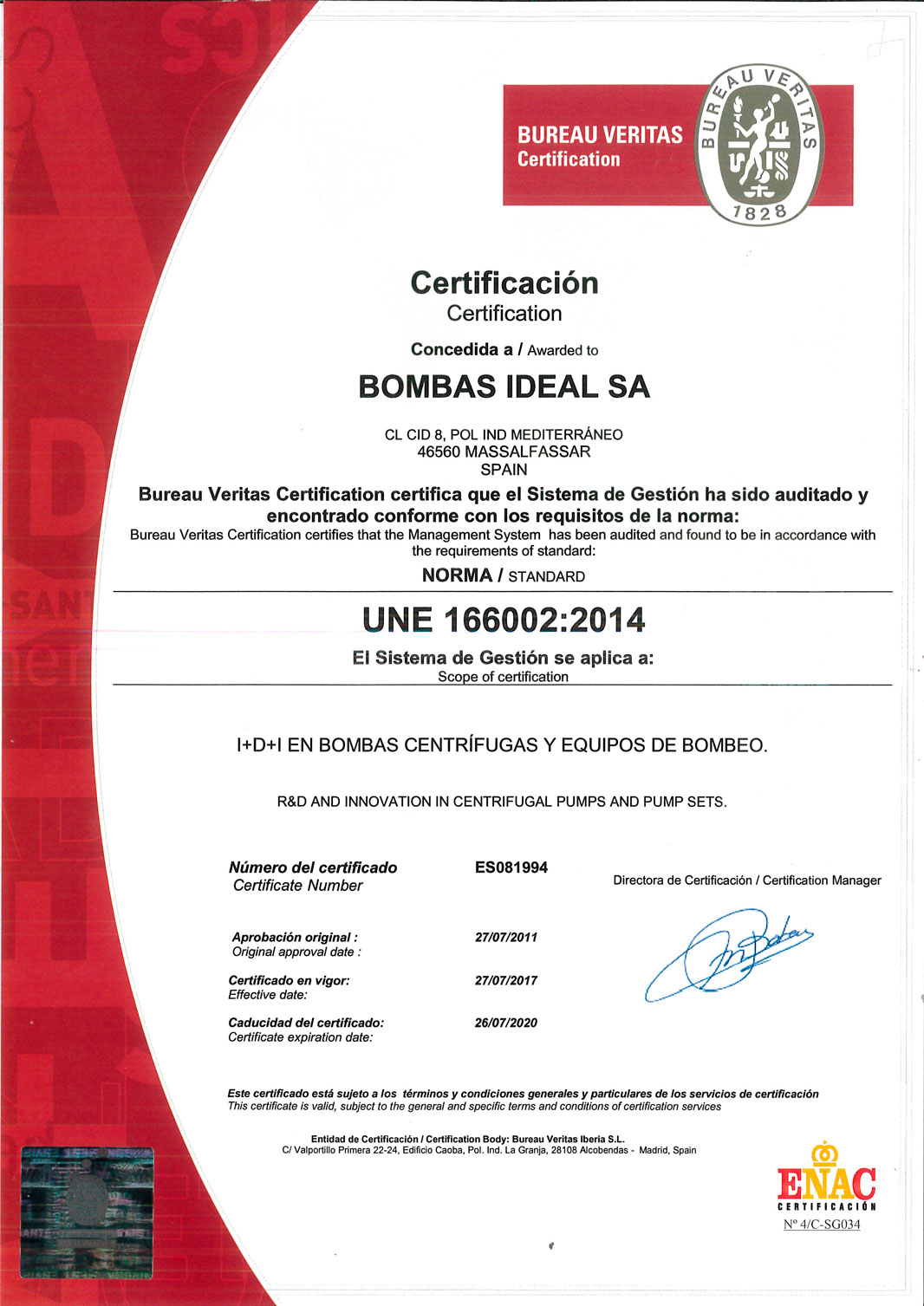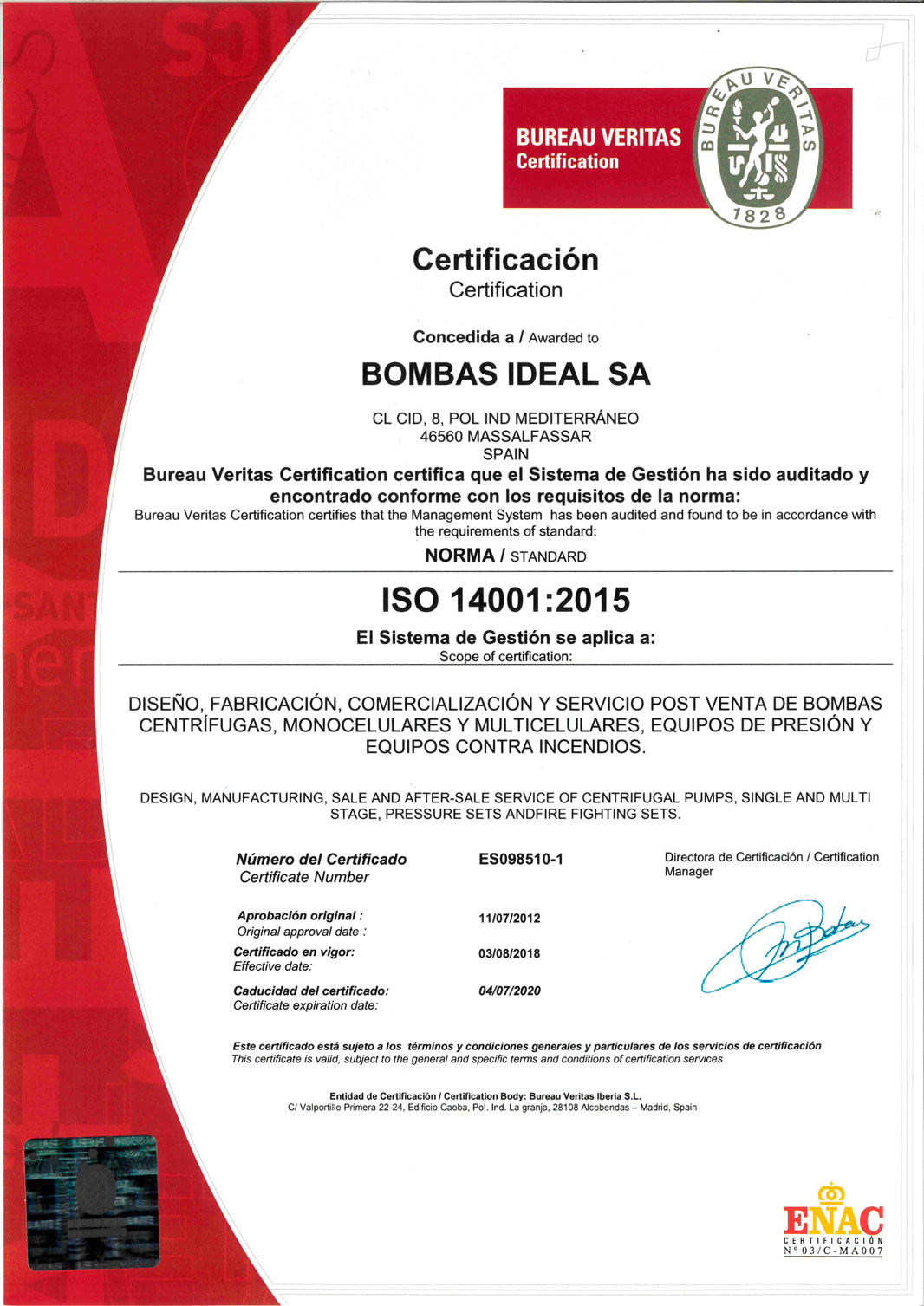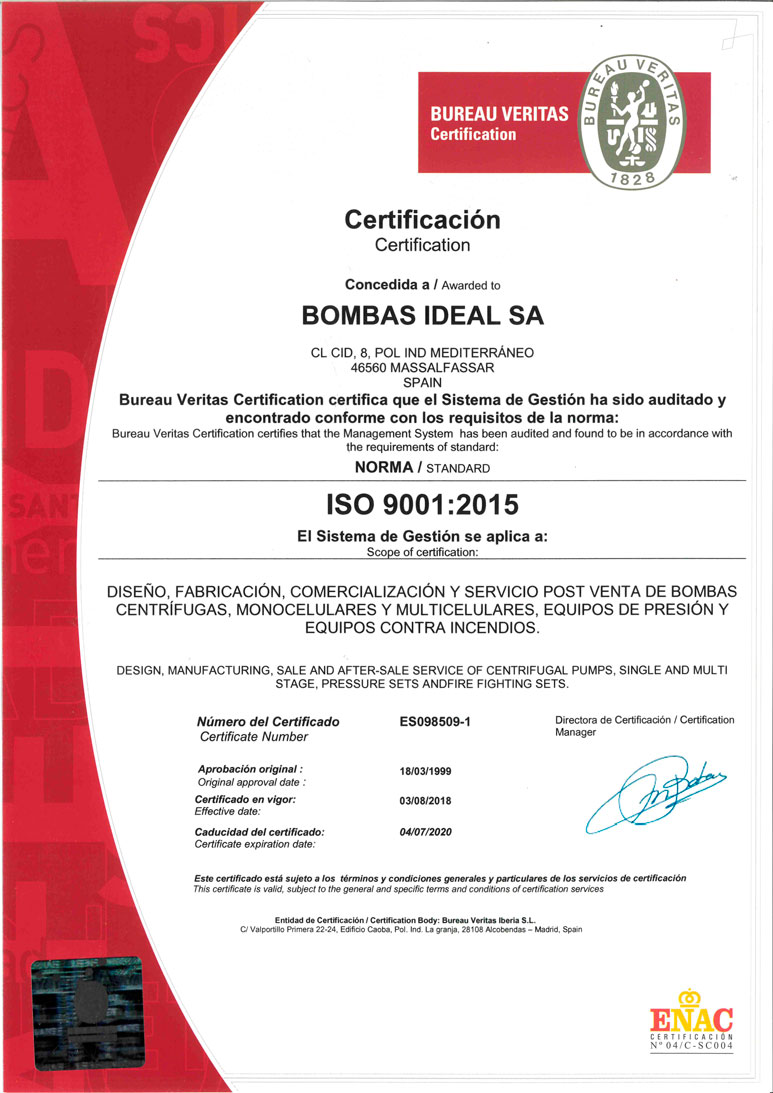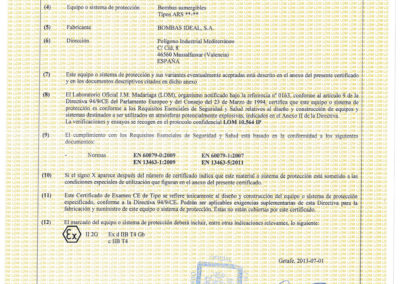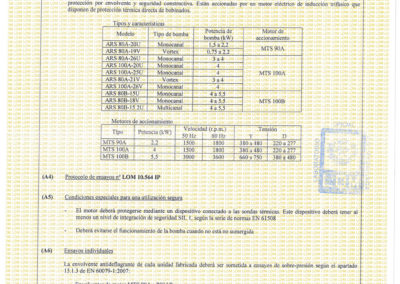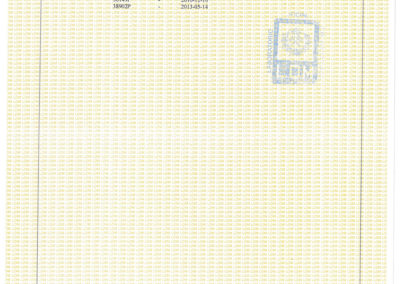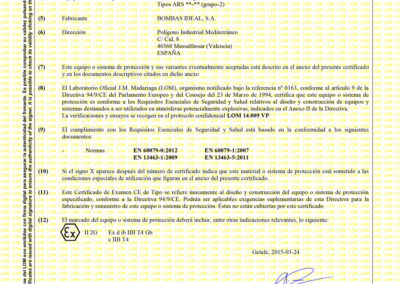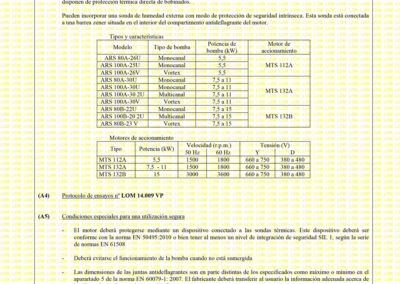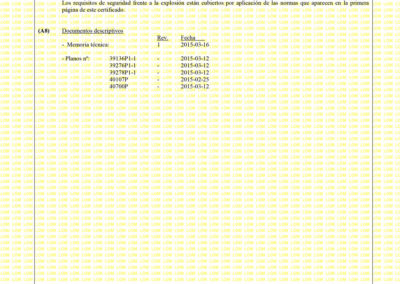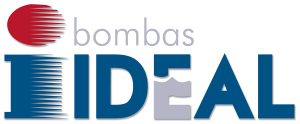Quality Certificates
This standard refers to the management of Research, Development and Innovation and has the objective of facilitating the systematization of R&D&I projects and optimize their management by adopting measures to continuously improve their effectiveness. Adding value through innovation.
The implementation of this R+D+i management system will bring many benefits to the company in the future, including boosting competitiveness through innovation.
This certification covers from the moment you have the idea until it enters the manufacturing line. At that moment the ISO 9001:2008 quality system enters, which we have had since 1999.
It is easy, in the current situation that surrounds us, to lose perspective and avoid what does not provide value in the short term.
Despite the crisis that surrounds us, we have continued to work and invest in this project. Because we are convinced that this Certification is important and necessary, since it is within our social responsibilities to put all the means to minimize, in a systematic way, the impact that our daily work has on the environment.
In this sense, we are proud to obtain this accreditation from Bureau Veritas.
We obtained ISO 9001 certification because we firmly believe in the quality of our products, processes and services. We understand that quality is the most important thing and this is our commitment since 1902.
As manufacturers, we have always developed products with our own technology and know-how. We obtained the UNE 166002 certification which covers all R&D&I processes.
The environment and its protection, not only from a romantic point of view, but as the main actors that we are, we take all the measures at our disposal to minimize the impact that we can create in all our processes in the environment. In this sense we maintain our commitment, obtaining the ISO: 14001 certification.
It is precisely the ISO 9000:2008 standard that establishes the basic fundamentals of a quality system, which are the following:
- Focus on the client, understood as the person or organization that directly receives the product or service.
- Leadership, i.e. the need for those responsible to create and maintain the right working environment.
- Participation and involvement of staff.
- Process-based approach as the most efficient way to achieve results.
- Systematic approach: the grouping of processes in a system that interrelates them improves their effectiveness.
- Continuous improvement, as a permanent objective.
- Approach based on verifiable facts..
- Search for alliances with suppliers instead of confrontation.
The ISO 9001:2000 standard is organised into eight chapters or thematic blocks. The first three are of an informative nature:
- Purpose and Scope of Application,
- Standards for Consultation,
- and Terms and Definitions.
It is interesting to note here that this standard is applicable to any organization that intends to maintain its products or services under a quality standard, in accordance with the perspective given by ISO 9000:2000. This universality is, without a doubt, its great positive asset, as it is what has allowed the enormous visibility of this standard, which results in trust on the part of customers.
